Knights and chivalry of three centuries. Knights of Scotland (part 3)
Here valor was born, here is the northern edge.
And wherever I was and where I wandered,
High mountains I have always loved.
(R. Burns. My heart is in the mountains. Author's translation)
We used to see in the Scots "men in plaid skirts," but as such they have become relatively recent. During Roman rule, the Picts lived in the lands of modern Scots. A very warlike people, whose soldiers were smeared with blue paint before the battle. The Romans did not waste their strength and people on conquering this cold and bleak world, but preferred to isolate themselves from it with a wall. At the time of Emperor Antonin, it was decided to erect a fortification between the west and east coasts, that is, between the bays of the Firth of Clyde and the Firth of Forth, in 160 km north of the previously constructed Adrian shaft, and called the Antoninov shaft. During the excavations on the territory of the Falkirk area lying here, archaeologists have found numerous traces of the presence of the Romans here. But then the Romans left here, and the centuries-old era of unrest and strife began.
Modern reenactors of the Battle of Bannockburn.
Well, during the period we are considering, that is, from 1050 to 1350 a year in the late Anglo-Saxon and Norman times, the Kingdom of Scotland was theoretically under English suzerainty. But when, at the end of the XIII and the beginning of the XIV century, British influence gave way to attempts at direct political control, this immediately led to wars of independence, the culmination of which was the defeat of England on the Bannockburn field in 1314.
They are, but larger. WITH historical the point of view is all very accurate. Unless the helmets are very shiny, their rust touched little. But at that time iron was of poor quality ...
At the same time, a process of cultural, political, and military unification was taking place inside Scotland, which, however, was never completed until the 18th century. The heart of the kingdom was the Pictish-Scottish state, known as the Kingdom of Alba, located in Scotland north of the line between the Firth of Forth and Clyde. Subsequently, the Vikings repeatedly landed here, so that the Anglo-Scottish border was moved away from this line far to the south.
Statue of King Malcolm III of Scotland from 1058 to 1093, (Scottish National Gallery, Edinburgh)
The Scottish monarchs also began a policy of feudalization, taking the Anglo-Saxon and Anglo-Norman institutions as a model, and even called on the Normans to settle in Scotland, which ultimately had a profound influence on the Scottish military culture. Nevertheless, Scotland of the XI century was still not a single state, which was also due to such natural geographic reasons as lowland areas (“Lowland”) in the east and south and highlands (“Highlands”) in the north and west, which caused also differences in economic activities.
“The English Knights attack the Scots at the Battle of Bannockburn. Artist Graham Turner.
In the XI century, the military organization, tactics and equipment of the Scottish warriors of the low-lying areas were very similar to those in northern England, particularly in Northumbria, with cavalry playing only a minor role up to the 1000 year. Favorite weapons infantry had axes, swords and spears, and the warriors of most regions, for example, Galloway, had relatively light weapons with others throughout this era.
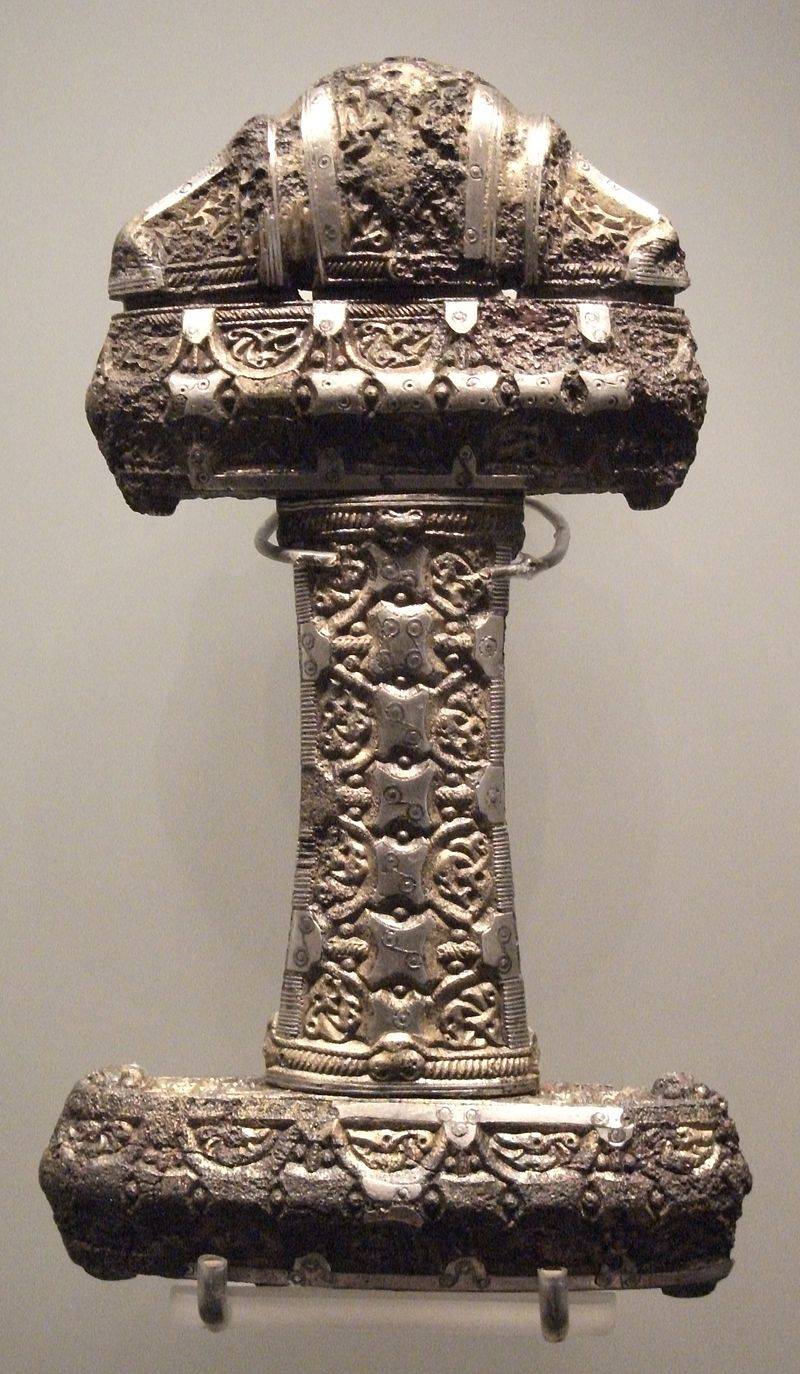
The handle of the Viking sword of the X century. (National Museum of the History of Scotland, Edinburgh)
Despite the appearance of even a small, but typical feudal elite in the XII-XIV centuries, the Scottish army still mainly consisted of infantry, armed at first with swords and short spears, and later with long spears or lances. Unlike England, where war has now become the lot of professionals, the Scottish peasantry continued to play an important role in military affairs, and war booty and looting were the main goal of military operations. At the end of the 13th and 14th centuries, the Scots learned to use the same siege weapons as the English, and archery was also widely spread among them.
At the same time, the war in the mountains and on the islands retained many archaic features, although even they changed over time. In general, it can be said that military equipment in many ways reflected the Scandinavian influence, and even in the XIV century the armament and armor of warriors of highland clans remained lighter than those of the “lowland” warriors, which, in turn, was old-fashioned compared to neighboring England .
The Holkham Bible 1320 miniature - 1330, presumably depicting the Battle of Bannockburn 1314 of the year. (British Library, London)
The main weapon of the Scottish spearmen was a spear 12 feet long, and an additional weapon was a short sword or dagger. Leather or quilted jackets, as well as chainmail gauntlets and corsets of iron plates linked with leather straps, served as armor for protection from arrows and swords. The head was covered with bascinet of conical shape or with wide brim. The exact ratio of spearmen and archers is unknown, but it seems that there were still more spearmen. The archer shot from a long bow (approx. 1, 80 cm) from a yew and had a quiver in which there were 24 arrows, one yard in length, with an iron petiole. In battle, the archers stepped forward, lined up, standing five or six steps away from each other, and fired on command, sending arrows at an angle to the horizon so that they fell at the target also at an angle or almost vertically. In the army of the English King Edward I, they were mainly archers from Ireland, northern England and from Wales. And from the same place archers and Scottish feudal lords recruited their troops.
Effiygiya Alan Swinton, died. 1200, Swinton, Berwickshire, Scotland.
(From the monograph by Brydall, Robert. 1895. The monumental effigies of Scotland. Glasgow: Society of Antiquaries of Scotland)
An important source of information on the history of military affairs in Scotland is effigy - tombstone sculptures. There are quite a few such epiches that today are very valuable historical sources, but they are usually damaged much more than their counterparts in England. In addition, it is also possible that some of them were made south of the Anglo-Scottish border and, as such, may not quite accurately reflect the military equipment of the Scottish warriors. On the other hand, their characteristic coarse carving and old-fashioned style may indicate that, although their creators were inspired by effects from England, they were local products. Thus, the heavily damaged image of Count Stratharna depicts a man in a hauberg with a mail kufuzh on his head and a large and old-fashioned shield, clearly hinting that he still did not wear plate armor or even a cuirass made of leather under a surko, being content with only a mail. The sword is relatively short and straight.
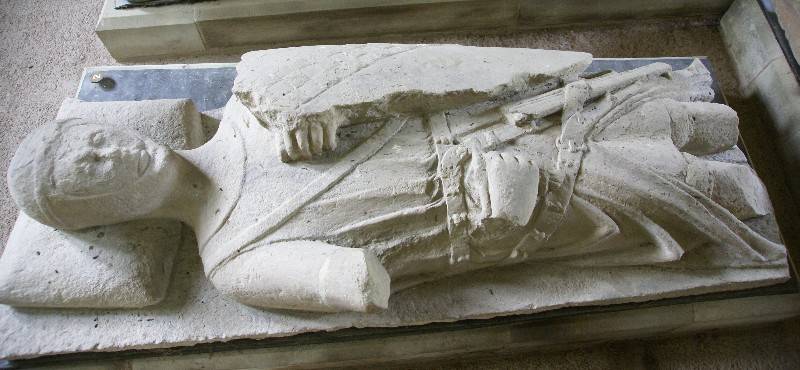
Many Scottish effigii suffered greatly from time ... One of the priory Inchmahon effigy.
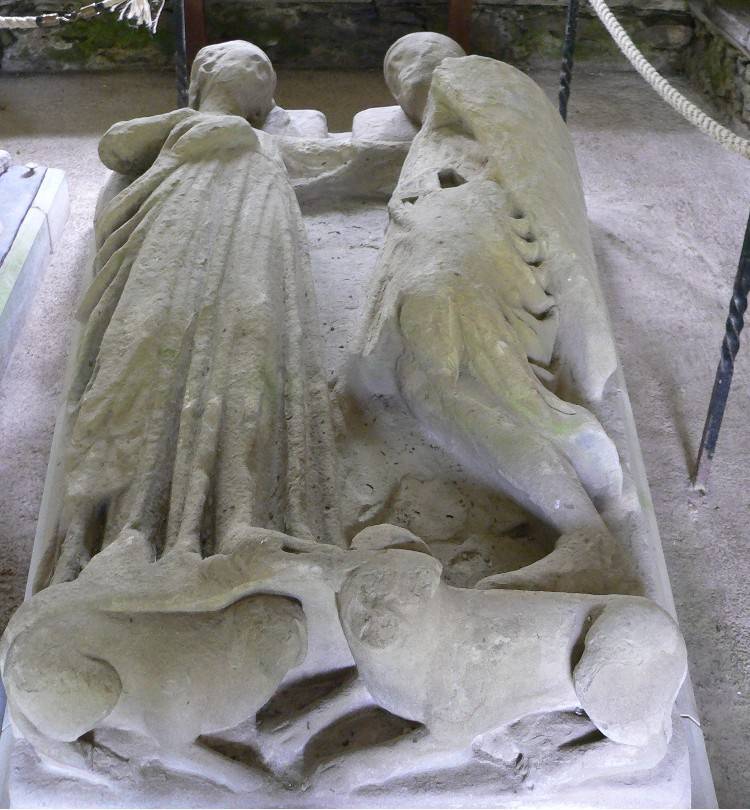
But the effect of Walter Stewart, Count Menteith, Perthshire, of the end of the 13th century, from the Priory Inchmahon in Scotland, where he is depicted with his wife. He has the same hauberg with chainmail “mittens” woven to its sleeves, which hang freely from the brushes. That is, they had slits in their palms through which their hands could be easily released if necessary. He also has a large shield with a flat top, although he is very worn out, and on the hips is a traditional belt with a sword.
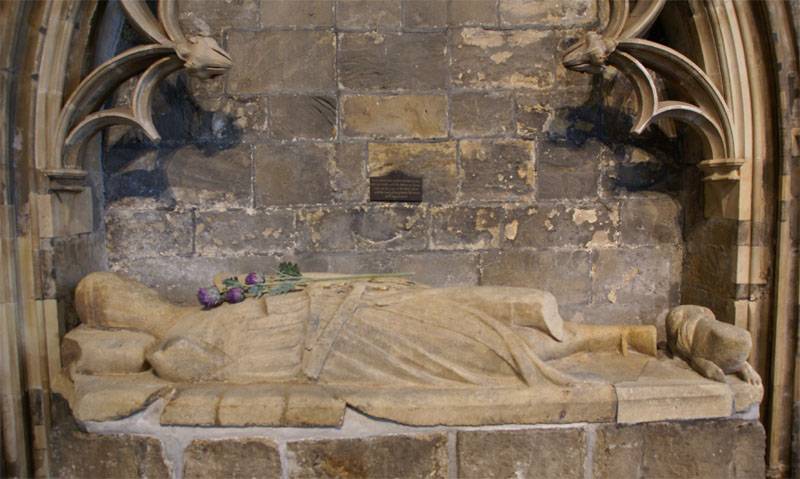
The effigy of Sir James Douglas, (Lanarkshire, c.1335, the Church of the Holy Bride, Douglas, Scotland), one of the greatest barons of Scotland, has survived to our time, but on it is depicted in a very simple, almost elementary military equipment consisting from chain haberkas and chain mail gloves. He has a padded gambeson, a hauberk visible under the hem, and he has a beautifully decorated belt with a sword. The shield, however, is still very large, given the manufacturing date of effigy, and probably reflects its lack of plate armor.
Later images of the 14th and 16th centuries, for example, the effect from Finlaggan belonging to Dognald McGillespaw shows that a particular style of weapons and armor has been preserved in this region; style that has some parallels in Ireland. The departed is dressed in quilted clothes with a chain mail mantle. This fashion is unknown among the knightly class of England. And this can be the result of both isolation and lack of resources, as well as traditional tactics of the Scottish infantry and light cavalry. The man clearly wears separate mittens. On his thigh is a long equestrian sword with a large curved cross, but the sheath is supported in the old fashioned way. The design of the handle is surprisingly similar to the earliest images of the famous Scottish Claymore sword, dating from the end of the 15th century.
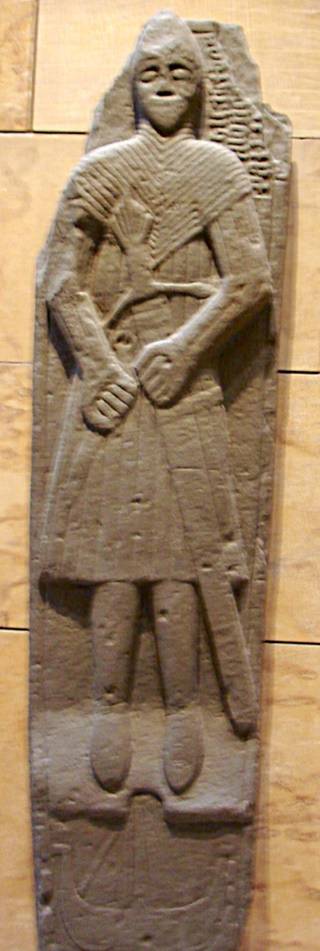
Donald McGillespay Effigy, ca. 1540 from Finlaghan, Scotland. National Museum of Scotland). The most expressive part of it is the sword!

Claymore, approx. 1610 –1620 Length 136, see Blade Length 103,5, see Weight 2068,5 (Metropolitan Museum, New York)
Thus, if the Scottish aristocratic knightly weaponry almost completely corresponded to the “English fashion”, although with some elements of anachronism, the infantry from the peasants was armed for a long time in the traditions of past eras, and the tactics used even the times of the Picts - that is, dense formations, bristling with long spears, which made them inaccessible to the enemy cavalry, including even the knight.
Использованная литература:
1. Brydall, R. The Monumental Effigies of Scotland, from the 13th to the 15th Century. Harvard University, 1895
2. Norman, AVB, Pottinger, D. Warrior to soldier 449 to 1660. L .: Cox & Wyman, Ltd., 1964.
3. Armstrong, P. Bannockburn 1314: Robert Bruce's Great Victory. Osprey Campaign No. 102, 2002.
4. Reese, P., Bannockburn. Canongate, Edinburgh, 2003.
5. Nicolle, D. Arms and Armor of the Crusading Era, 1050 - 1350. UK L .: Greenhill Books. Vol.1.
6. Gravette, K. Knights: The History of English Knighthood 1200-1600 / Christopher Gravette (Translated from English by A. Colin). M .: Eksmo, 2010.
To be continued ...
- Vyacheslav Shpakovsky
- Knights and chivalry of three centuries. Knighthood and knights of northern France. Part of 1
Knights and chivalry of three centuries. Knighthood and knights of England and Wales. Part of 2
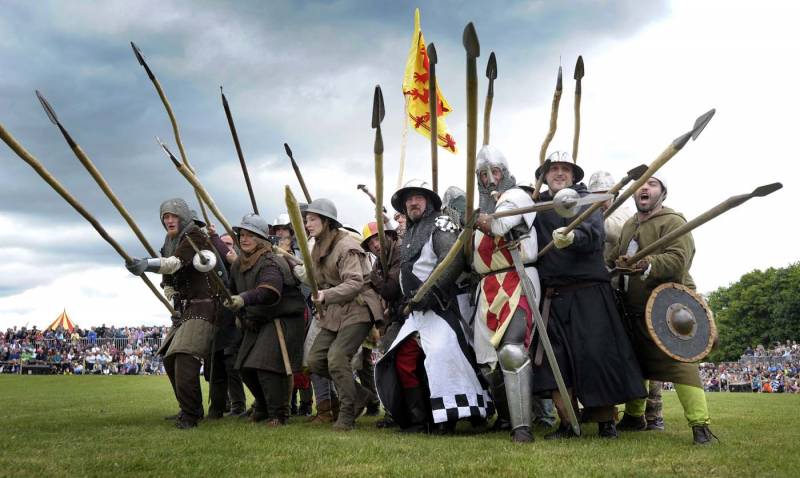
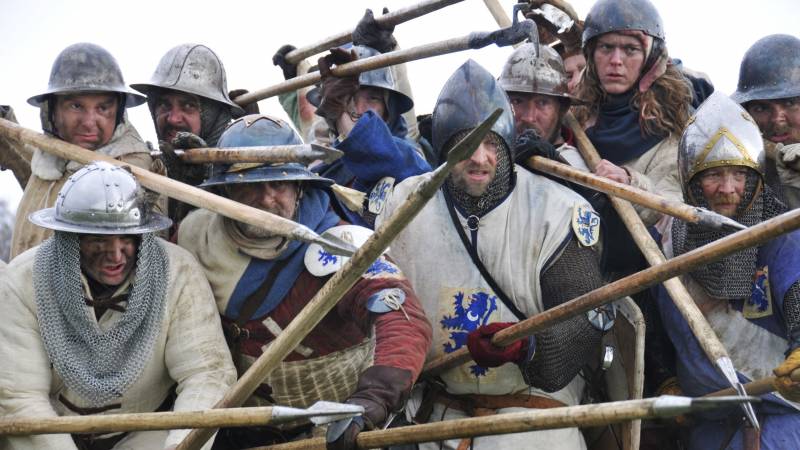
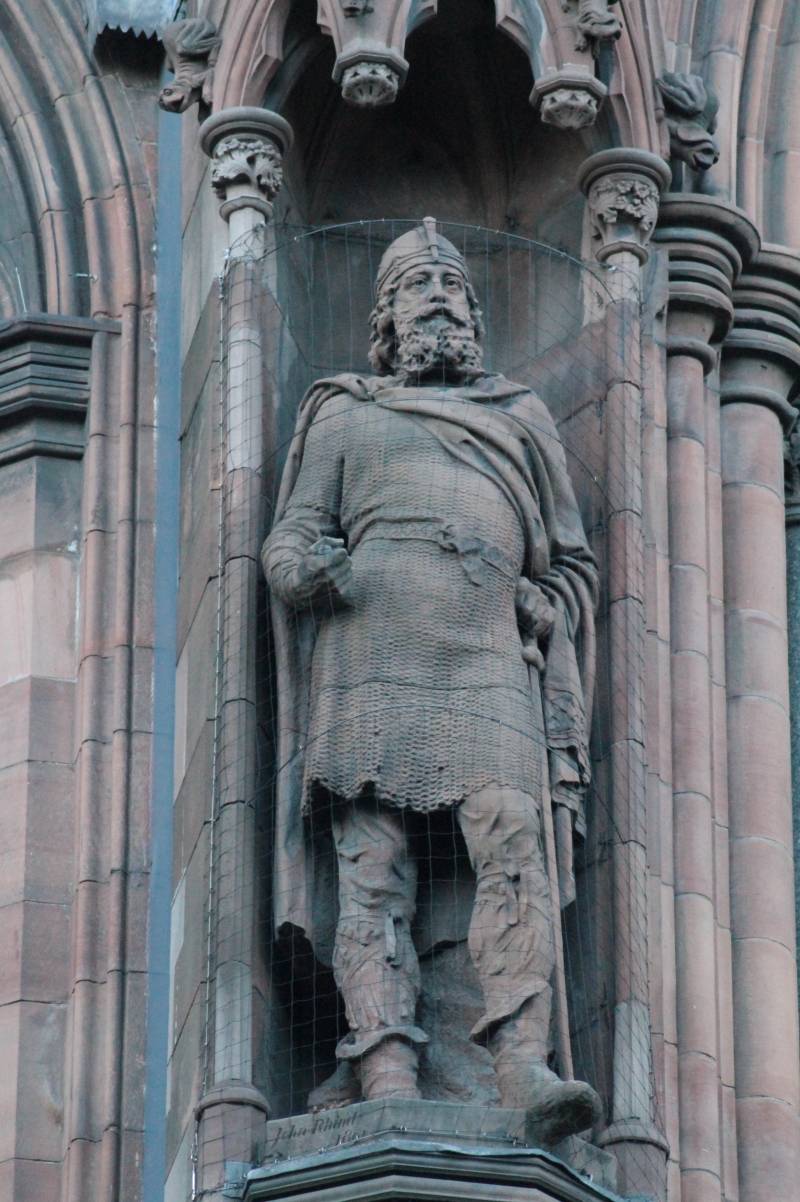
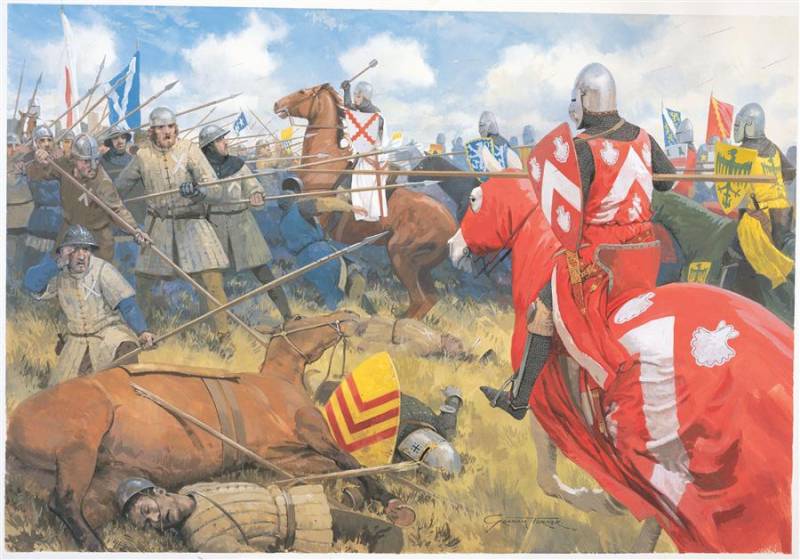
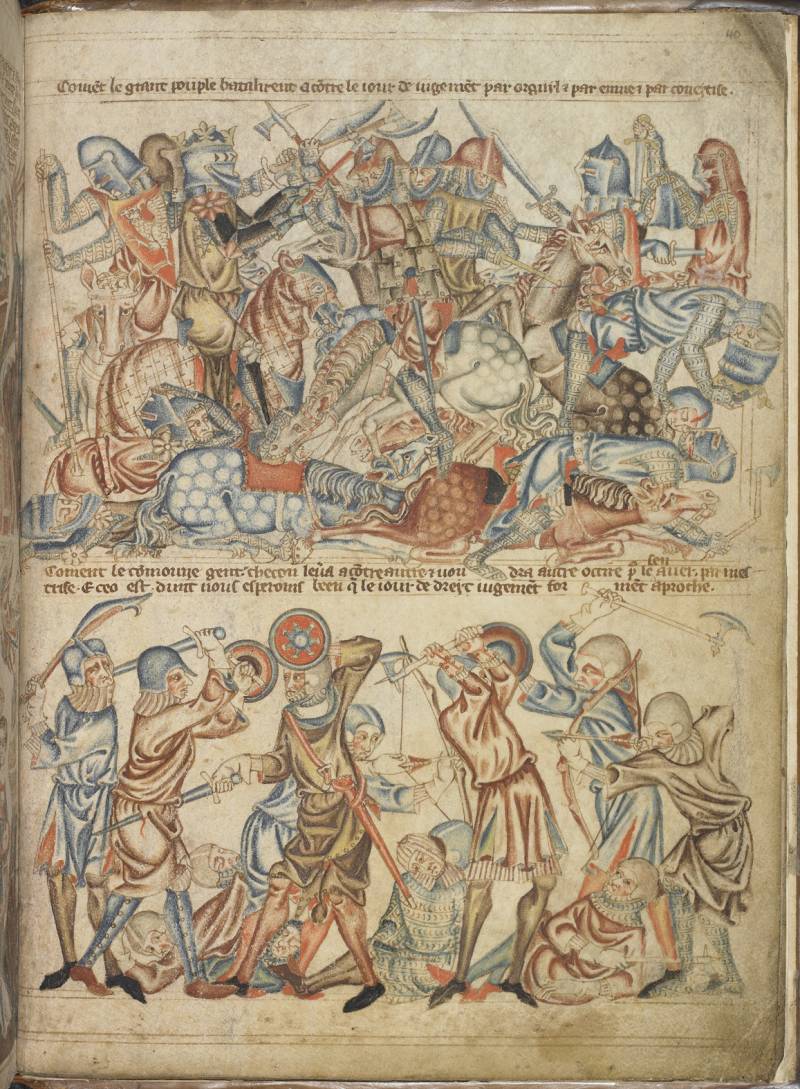
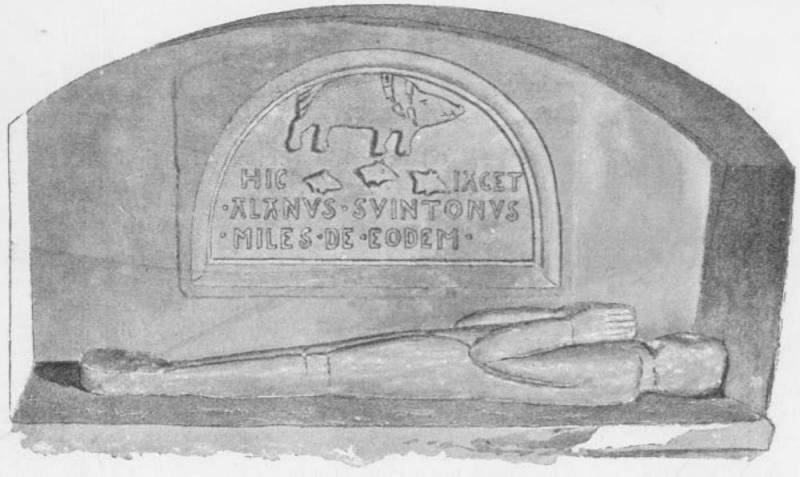
Information